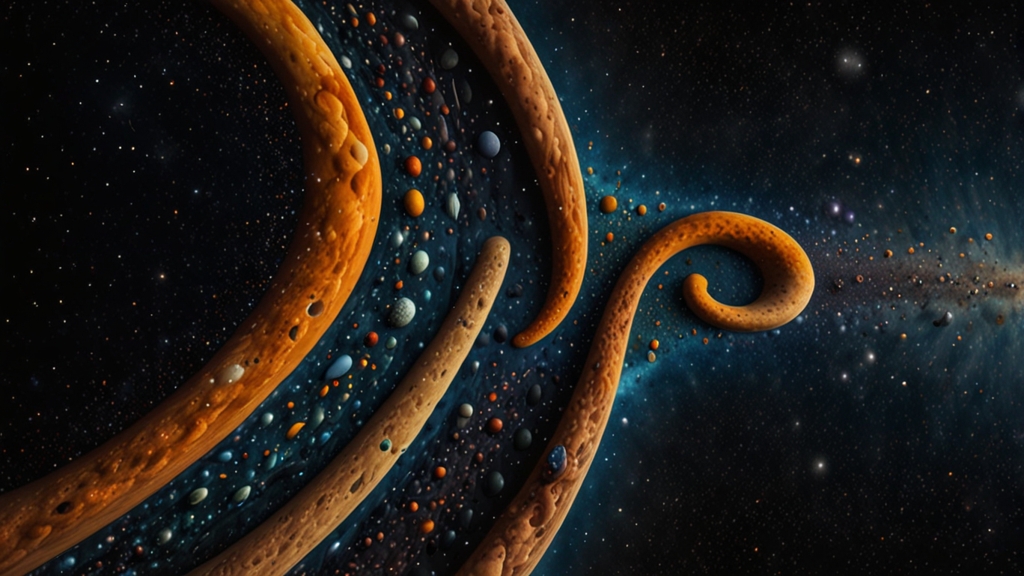The Hidden Patterns of the Universe Geometry Explored
From the spiral of a galaxy to the shape of a seashell, the universe is adorned with intricate geometrical patterns. These patterns reveal themselves in both the macroscopic scale of the cosmos and the microscopic scale of quantum particles. Exploring the geometry of the universe unveils an underlying order that has fascinated mathematicians, physicists, and philosophers for centuries.
The Ancient Origins of Geometrical Understanding
Geometry, derived from the Greek words "geo" meaning earth and "metron" meaning measurement, has been studied since ancient times. The early Greek mathematicians, such as Euclid, Pythagoras, and Archimedes, laid the foundations by systematically exploring shapes, sizes, and spatial relationships. Euclid's Elements, a collection of 13 books, is a significant ancient text contributing to our understanding of plane geometry.
“The laws of nature are but the mathematical thoughts of God.”
These early studies provided the groundwork for understanding geometric patterns in natural phenomena. The Golden Ratio, Fibonacci sequences, and fractals are some examples of patterns that ancient scholars observed in both art and nature.
Geometrical Patterns in Nature
Nature is a master artist that employs geometry in elegant and often surprising ways. The Fibonacci sequence and the Golden Ratio are two of the most prominent examples. The Fibonacci sequence, where each number is the sum of the two preceding ones, can be seen in the arrangement of leaves on a stem, the branching of trees, and the spirals of shells. The Golden Ratio, approximately 1.618, appears in the proportions of hurricanes, galaxies, and even the human body.
Fractals, repetitive patterns that occur at various scales, are another fascinating geometrical concept visible in nature. Famous fractal patterns include the branching of trees, lightning bolts, and even the structure of our lungs. These patterns are self-similar, meaning that a small part of the fractal resembles the whole structure. Benoît Mandelbrot, a French-American mathematician, introduced and popularized fractal geometry, further deepening our appreciation of the complex patterns found in nature.
“Clouds are not spheres, mountains are not cones, coastlines are not circles, and bark is not smooth, nor does lightning travel in a straight line.”
The Cosmic Scales: Geometry in the Universe
On a cosmic scale, geometric patterns reveal themselves in the shapes of galaxies, the formation of planetary orbits, and the curvature of spacetime. Spiral galaxies, such as the Milky Way, follow logarithmic spirals, closely related to the Fibonacci sequence. The elliptical orbits of planets and the shapes of celestial bodies adhere to Kepler's laws of planetary motion, grounded in geometric principles.
The theory of General Relativity, proposed by Albert Einstein, revolutionized our understanding of geometry in the fabric of spacetime. According to Einstein, massive objects cause a curvature in spacetime, creating the gravitational force we observe. The equations governing this curvature are deeply rooted in differential geometry, a sophisticated branch of mathematics.
Quantum Geometry: Patterns at the Microscale
At the quantum level, geometry plays a crucial role in understanding the fundamental particles and forces of nature. Quantum geometry studies the structure of space at incredibly small scales, where classical notions of geometry break down. String theory, a leading candidate for unifying quantum mechanics and general relativity, posits that the fundamental components of the universe are one-dimensional "strings" rather than point particles.
These strings can vibrate at different frequencies, forming different particles, and their interactions can be described using complex geometrical shapes, such as Calabi-Yau manifolds. These intricate structures, with their multiple dimensions, offer a glimpse into the potentially profound connection between geometry and the fundamental workings of the universe.
“Geometry is the language of space and time, and understanding it could unlock the secrets of the quantum realm.”
Conclusion: The Infinite Exploration
The exploration of the hidden patterns of the universe reveals an intricate tapestry woven with geometric laws. From ancient mathematical principles to cutting-edge theories in physics, geometry serves as a bridge connecting disparate phenomena across scales. As technology advances and our exploration deepens, the geometrical patterns underlying the universe continue to inspire wonder and curiosity. The journey to understand these patterns is far from over, promising new insights and profound revelations about the cosmos and our place within it.








